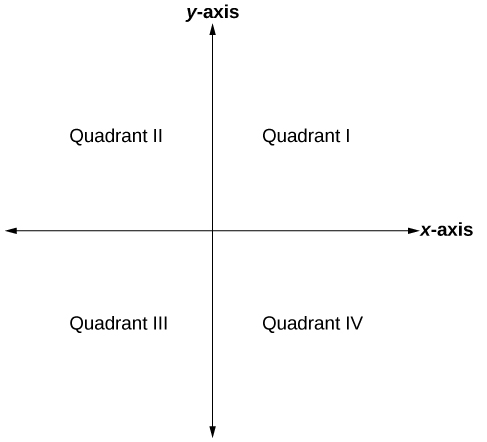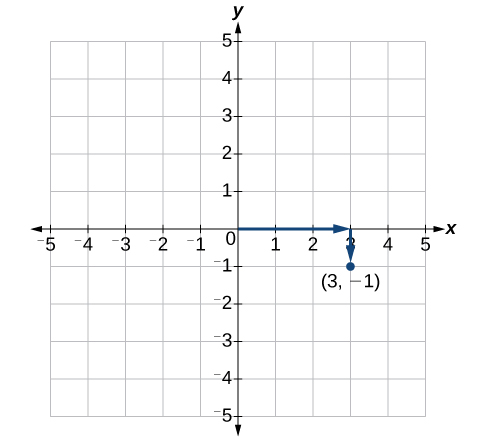- Plot points on the Cartesian coordinate plane.
The Cartesian Coordinate Plane
The Cartesian coordinate system, also called the rectangular coordinate system, is based on a two-dimensional plane consisting of the [latex]x[/latex]-axis and the [latex]y[/latex]-axis. Perpendicular to each other, the axes divide the plane into four sections. Each section is called a quadrant; the quadrants are numbered counterclockwise as shown in the figure below.

Each point in the plane is identified by its [latex]x[/latex]–coordinate, or horizontal displacement from the origin, and its [latex]y[/latex]–coordinate, or vertical displacement from the origin. Together we write them as an ordered pair indicating the combined distance from the origin in the form [latex]\left(x,y\right)[/latex]. An ordered pair is also known as a coordinate pair because it consists of [latex]x[/latex]and [latex]y[/latex]-coordinates.
For example: The center of the plane is the point at which the two axes cross. It is known as the origin or point [latex]\left(0,0\right)[/latex].
